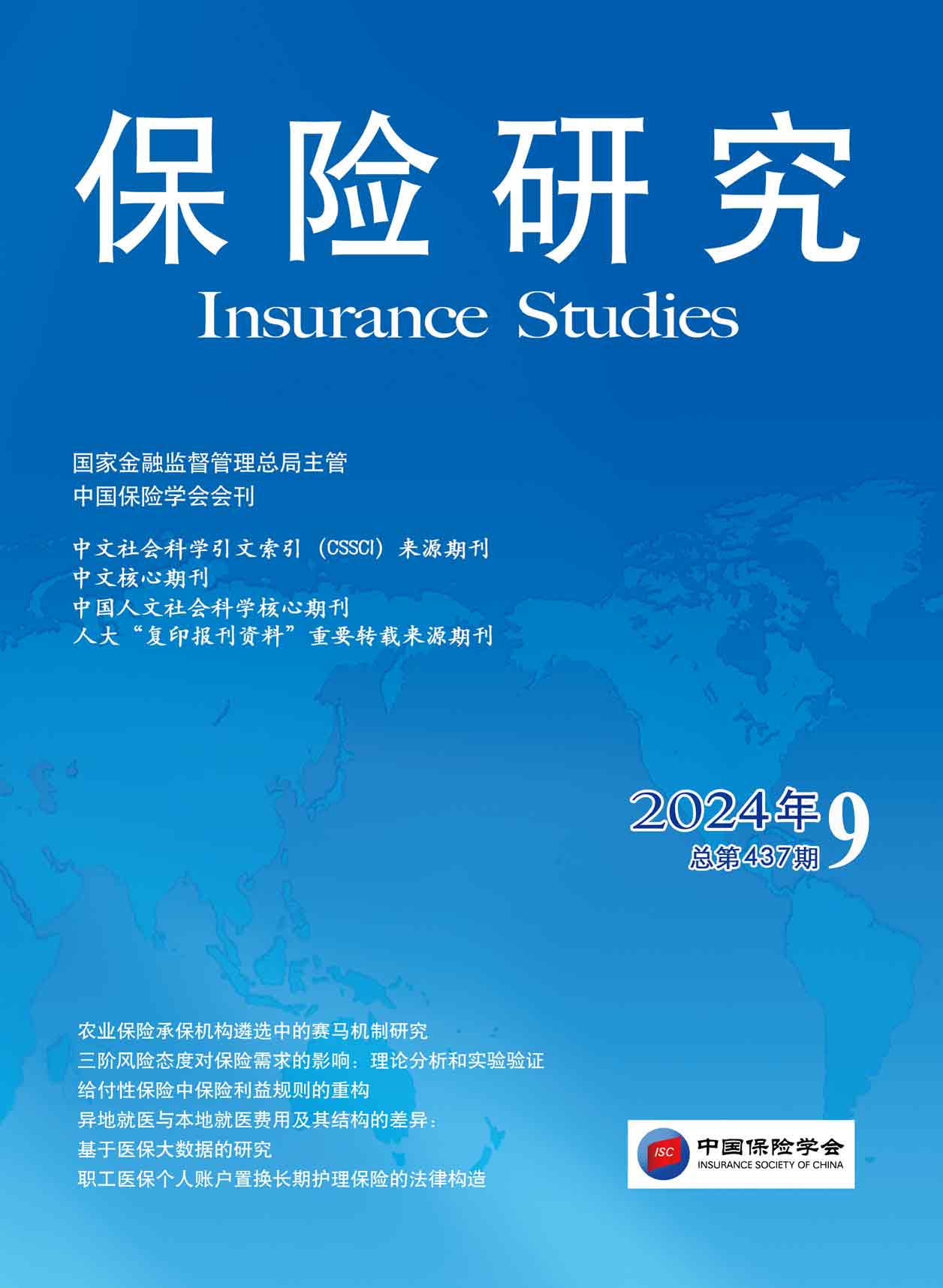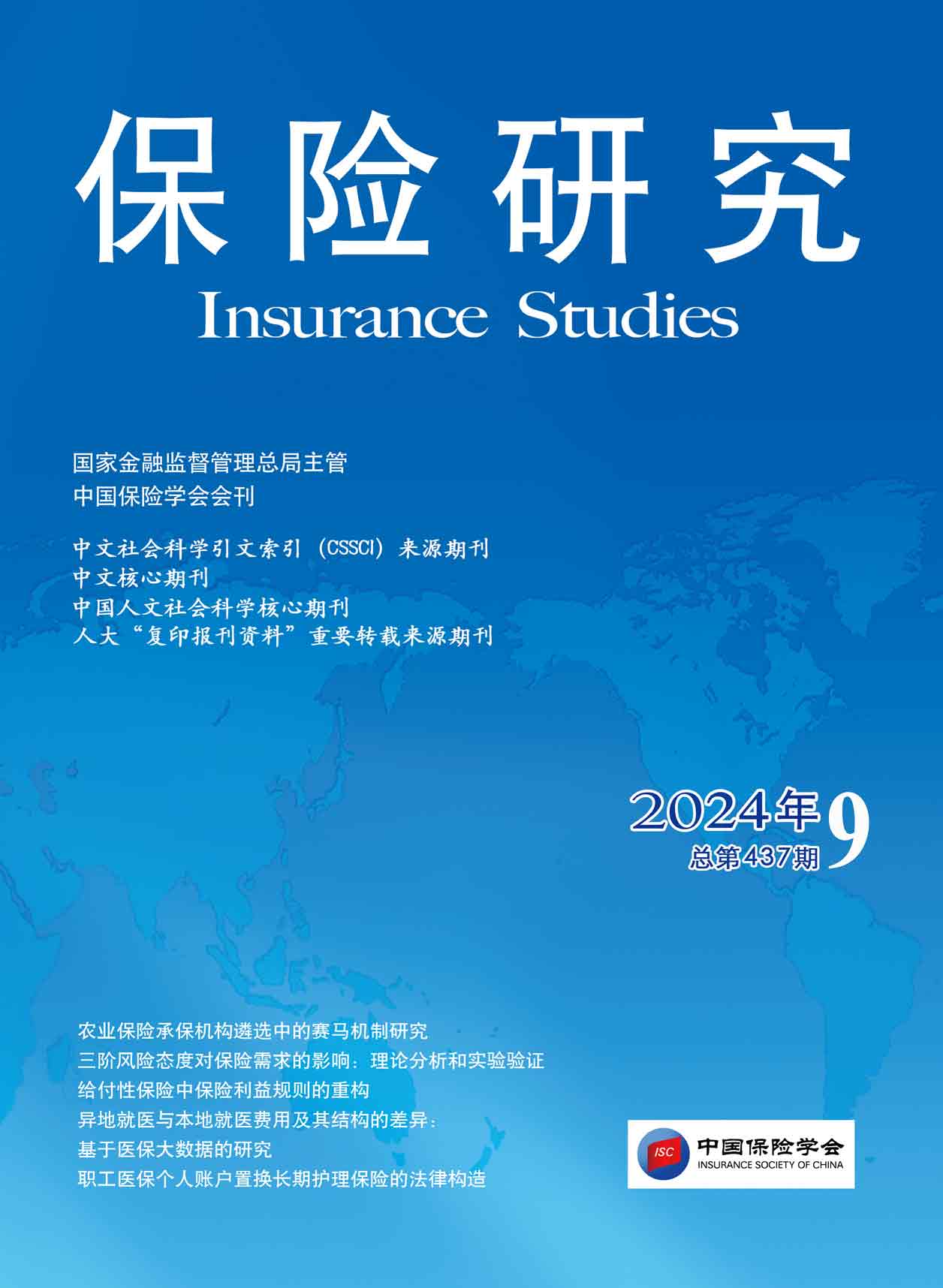
《保险研究》20240407-《长期护理保险能够缓解健康不平等吗?——来自CHARLS数据的证据》(朱铭来、康琢)
[中图分类号]F842.0[文献标识码]A[文章编号]1004-3306(2024)04-0090-11 DOI:10.13497/j.cnki.is.2024.04.007
资源价格:30积分
- 内容介绍
[摘 要]解决好失能人群的健康问题是缓解健康不平等,最终实现全民健康的必然要求。本文主要利用2011年、2013年、2015年和2018年四期中国健康与养老追踪调查微观面板数据(CHARLS),基于以个人自评健康测度的相对剥夺指数构造健康不平等指标,并建立多时点双重差分模型实证检验长期护理保险对健康不平等的作用效果。研究发现,长期护理保险能够缓解因失能带来的健康不平等;长期护理保险缓解健康不平等的作用效果具有异质性,对中重度失能、高年龄组、受教育程度较低、居住在城镇群体的影响更加显著。进一步分析表明,长期护理保险能够通过专业化照护提高健康水平,降低医疗支出,并基于收入效应提高失能人群自身健康感知,最终缓解群体间健康不平等;随着实行时间的增加,长期护理保险缓解健康不平等的作用效果逐渐增强。
[关键词]失能;长期护理保险;健康不平等;多时点双重差分
[基金项目]国家社会科学基金一般项目“延迟退休背景下中国特色代际支持模式及影响研究”(23BRK015)。
[作者简介]朱铭来,南开大学金融学院教授、博士生导师,研究方向:卫生经济与医疗保障;康琢(通讯作者),南开大学金融学院博士研究生,研究方向:卫生经济与医疗保障。
Can Long-term Care Insurance Alleviate Health Inequality?—Evidences from CHARLS
ZHU Ming-lai,KANG Zhuo
Abstract:Solving the health problems of disabled individuals is an inevitable requirement for alleviating health inequality and ultimately achieving universal health.This article uses panel data from four issues China Health and Retirement Longitudinal Study in 2011,2013,2015,and 2018 to construct a health inequality indicator based on the relative deprivation index of self-rated health,and establishes a time-varying DID model to empirically test the effect of long-term care insurance on health inequality.The study shows that Long Term Care Insurance (LTCI) can effectively alleviate health inequality caused by disability.The effectiveness of LTCI in alleviating health inequality is heterogeneous,with a more significant impact on individuals with moderate to severe disability,older age groups,lower education levels,and those living in urban areas.Further analysis shows that,through specialized care,LTCI can improve health levels,reduce medical expenses,and enhance the health perception of disabled individuals based on income effects,ultimately alleviating health inequality among groups.In addition,as the implementation time increases,the effectiveness of LTCI in alleviating health inequality gradually strengthens.The conclusion of this article provides empirical reference for optimizing the LTCI system and achieving substantial health equity.
Key words:disability;Long Term Care Insurance;health inequality;time-varying DID

《保险研究》20240904-《数字鸿沟与家庭商业保险决策》(杨碧云、黎卓妍、易行健、张凌霜)

《保险研究》20240901-《农业保险承保机构遴选中的赛马机制研究》(谭莉、丁少群、汪洋)

《保险研究》20240902-《政策性农业保险促进了农村地区包容性增长吗?——基于收入再分配视角》(令涛、赵桂芹、张宗军)

《保险研究》20240903-《分类嵌入在车险索赔次数预测中的应用》(张连增、罗来娟、肖宇谷、李浩男)

《保险研究》20240905-《三阶风险态度对保险需求的影响:理论分析和实验验证》(郭振华、任钊弘、倪红霞)

《保险研究》20240906-《中国特色保险公司ESG投资体系》(白雪石、郭亮、孙恺健)
